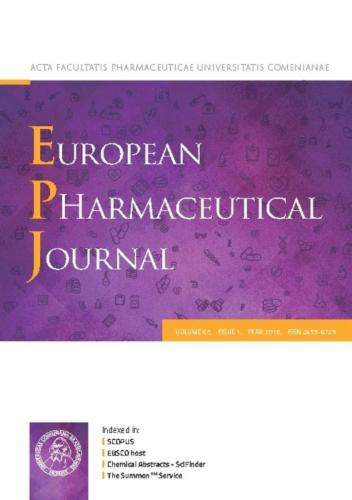Size dependent impact of platinum nanoparticles on doxorubicin activity
IF 4.7
3区 医学
Q1 PHARMACOLOGY & PHARMACY
引用次数: 0
Abstract
Cancer is a leading cause of death worldwide, with nearly 10 million fatalities yearly. Consequently, despite the search for new therapeutic approaches, the use of classical chemotherapy, remains one of the main treatment regimens. Therefore, we evaluate the use of platinum nanoparticles (PtNPs) of different sizes as potential modulators of doxorubicin (DOX) activity.
In the presented research, we utilized a wide range of methods, including Spectroscopic measurements, Isothermal Titration Calorimetry, Dynamic Light Scattering, and Atomic Force Microscopy, as well as biological assays such as the Ames mutagenicity test on Salmonella enterica serovar Typhimurium TA98 and the alamarBlue cytotoxicity assay with Fluorescent Confocal Microscopy on non-cancerous HaCaT and cancerous MelJuSo cell lines, to investigate the interactions between PtNPs and DOX and the effect of diverse-sized nanoparticles on DOX activity.
The obtained results indicate the presence of direct interactions, particularly highlighting differences related to particles size. We confirmed that DOX affects the aggregation of nanoparticles, while the nanoparticles induce DOX fluorescence quenching. In terms of biological aspects, PtNPs reduced the mutagenicity of DOX, and increased the survival of non-cancerous HaCaT cells. Furthermore, 70 nm PtNPs significantly increased DOX effects on cancerous MelJuSo cells by negatively affecting their morphology and culture density.
To conclude, our research provided valuable insights into the interactions between PtNPs and DOX with particular emphasis on the nanoparticles’ size influence highlighting nanoparticles’ impact on DOX cytotoxicity providing a base for further research on the potential future modification in treatment approaches.

铂纳米颗粒对阿霉素活性的影响
癌症是世界范围内死亡的主要原因,每年有近1000万人死亡。因此,尽管寻找新的治疗方法,使用经典化疗仍然是主要的治疗方案之一。因此,我们评估了不同大小的铂纳米颗粒(PtNPs)作为阿霉素(DOX)活性的潜在调节剂的使用。在本研究中,我们使用了广泛的方法,包括光谱测量、等温滴定量热法、动态光散射和原子力显微镜,以及生物分析,如对肠沙门氏菌血清型鼠伤寒杆菌TA98的Ames诱变性试验和对非癌性HaCaT和癌性MelJuSo细胞系的alamarBlue细胞毒性试验。研究PtNPs与DOX之间的相互作用以及不同粒径纳米颗粒对DOX活性的影响。所得结果表明存在直接的相互作用,特别是突出与颗粒大小有关的差异。我们证实了DOX影响纳米颗粒的聚集,而纳米颗粒诱导DOX荧光猝灭。在生物学方面,PtNPs降低了DOX的诱变性,增加了非癌性HaCaT细胞的存活率。此外,70 nm PtNPs通过对癌性MelJuSo细胞的形态和培养密度产生负面影响,显著增加DOX对癌性MelJuSo细胞的作用。总之,我们的研究为PtNPs和DOX之间的相互作用提供了有价值的见解,特别强调了纳米颗粒的大小影响,突出了纳米颗粒对DOX细胞毒性的影响,为进一步研究未来治疗方法的潜在修改提供了基础。
本文章由计算机程序翻译,如有差异,请以英文原文为准。
求助全文
约1分钟内获得全文
求助全文
来源期刊
CiteScore
9.60
自引率
2.20%
发文量
248
审稿时长
50 days
期刊介绍:
The journal publishes research articles, review articles and scientific commentaries on all aspects of the pharmaceutical sciences with emphasis on conceptual novelty and scientific quality. The Editors welcome articles in this multidisciplinary field, with a focus on topics relevant for drug discovery and development.
More specifically, the Journal publishes reports on medicinal chemistry, pharmacology, drug absorption and metabolism, pharmacokinetics and pharmacodynamics, pharmaceutical and biomedical analysis, drug delivery (including gene delivery), drug targeting, pharmaceutical technology, pharmaceutical biotechnology and clinical drug evaluation. The journal will typically not give priority to manuscripts focusing primarily on organic synthesis, natural products, adaptation of analytical approaches, or discussions pertaining to drug policy making.
Scientific commentaries and review articles are generally by invitation only or by consent of the Editors. Proceedings of scientific meetings may be published as special issues or supplements to the Journal.

 求助内容:
求助内容: 应助结果提醒方式:
应助结果提醒方式:


